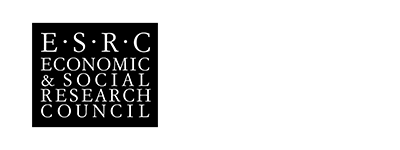‘Fragile with Attitude’ was an art exhibition held in the Great Oak Hall at Westonbirt Arboretum from 21st – 25th April 2022.
The exhibition was developed as part of the ‘Re-Storying Landscapes for Social Inclusion’ project; a project that aimed to inform landscape interpretation and decision-making that reflects and respects the diverse ways in which landscapes are sensed, valued and experienced over time.
‘Fragile with Attitude’ was curated by contemporary artist and creative consultant, Zoe Partington, in collaboration with Westonbirt Arboretum, Art Shape and six fantastic artists, including Naomi Said, Lisa Barnfield (the Green Lady), Chloë of the Midnight Storytellers, Eleanor May (Cat in the Moon), Julia Nigh (Duck & Dot), and mixed media abstract artist, Sarah Goddard.
Art Shape is an organisation that is passionate about supporting and enabling artists facing disabling barriers to realise their creative and learning potential.
You can read more about our artists online.
You can hear an introduction to the exhibition and the work produced in this short video by film-maker Chris Smart. (A written description of the video content can be downloaded here.)
About the exhibition
Westonbirt is home to around 100 threatened tree species, including some of the rarest, ‘critically endangered’ species such as the sapphire dragon tree and Madeira mountain ash tree.
Recognised as ecologically fragile, the lives of each individual tree at Westonbirt are celebrated as symbols of hope, as sources of shelter, oxygen, food – an integral part of the wider ecosystem.
Yet, so often – and particularly since the Covid-19 pandemic – human lives deemed fragile are viewed as vulnerable or damaged. With illness, impairment and disability comes an assumption of inability, of a unique and separate form of weakness.
Rather than countering the social injustices that create unnecessary situations of vulnerability, disabled people are often segregated, pitied or dismissed.
In the words of influential scholar, Sara Ahmed:
“We need to develop a different orientation to breaking. We can value what is deemed broken; we can appreciate those bodies, those things, that are deemed to have bits and pieces missing. Breaking need not be understood only as the loss of the integrity of something, but as the acquisition of something else, whatever that else might be” (Ahmed, 2017: 180).
Experience and expertise
Recognising this, ‘Fragile with Attitude’ encouraged people to recognise more affirmative understandings of disability rooted in strength, interconnection, collective experience and expertise.
Through a series of workshops onsite and online – and an ongoing supportive WhatsApp thread between the project team and artists throughout – each artist found creative ways to ‘re-story’ the landscape through their own unique experiences. Artist and curator, Zoe Partington, emphasised the value of facilitating artistic workshops in situ to enable disabled people to build landscape familiarity, using the creative process to manage stress, anxiety and the unfamiliar in a non-conventional way.
Disability Arts are increasingly recognised as an important way to counter master narratives of impairment and disability – to reimagine bodily difference and move beyond reductive, dominant representations that misrepresent or flatten experiences of disability.
As Zoe explained:
“Disability Art is art made by disabled people, drawing upon a lived experience of disability. Disability Art has been recognised as a crucial component of the disability rights movement since the 1980s.
Disability Arts is about disabled people joining together. Through nurturing an affirmative self-identity, it gives us the confidence to promote the social change we want to see happen.
Creative interaction between disabled people involved in politics and disabled people involved in the arts fosters a collective identity, creating a new disability culture.
Proving that able-bodied people are not our role models. Providing control in how we are presented to others – a rounded picture of the reality of our lives. A celebration of difference”.
Each artist exhibited several pieces, including many depicted in the video above. You can also listen to The Twisted Tree produced by Chloë of the Midnight Storytellers online. In addition, exhibition curator, Zoe, created a series of vibrant abstract landscape pieces inspired by the Arboretum, alongside creative audio descriptions to accompany them, which can also be accessed online.
Over 500 members of the public visited the exhibition in April, with fantastic comments written in the visitor book, such as:
“Fantastic, calming experience, such skill”.
“Such beautiful, thought provoking work with an important message behind it. Thank you for sharing”.
“Wonderful, beautiful and very profound, thank you!”
“Made me view us all as in a constant flux of disability and ability. Everyone is different and struggles in different ways at different times”.
“Life affirming, thank you”.
Reflecting on the overall experience, one of the artists, Sarah Goddard explained:
“I have felt like an imposter, as many of us do, whatever our field. But being a visually-impaired visual artist has felt oxymoronic and something I should hide. However, while working with other artists who face disabling barriers, I didn’t feel like the odd one out, having to explain access needs. This made me feel at ease, and freed me to concentrate on art from the start. Then throughout the project I came to further embrace my identity as a visually-impaired artist, and I believe that this has enabled me to create more authentic work. I am building on this to create art that more closely reflects how I experience the natural world.”
Before the exhibition was opened to the public, we ran a two-day project conference in collaboration with our AHRC (Arts and Humanities Research Council)-funded ‘Unlocking Landscapes’ Network, where we included a dedicated session around the exhibition and the value of Disability Arts. Hearing from the artists about their experiences was flagged as a particularly useful part of the conference by participants, with feedback including:
“Hearing from the artists about why they participated was particularly memorable because it showcased the reality of how unintentionally implemented barriers are affecting people's chance to explore and engage with Westonbirt”.
One of the policy participants also commented on how:
“The use of the arts (in the broadest sense) offers a potential way not only to engage with a range of people in nature (how I think art tends to be currently largely used in the conservation sector), but as way of understanding how different people are making sense of the world, and therefore as another valid and valuable form of 'evidence' for organisations (like mine)”.
We hope this exhibition has demonstrated the power of the arts (and particularly Disability Arts) in sharing new understandings of difference that open up new perspectives and possibilities around inclusive landscape experience and interpretation.
Finally, you can hear an interview on RNIB Connect with Zoe, done by Toby Davey, which is available online so if you’d like to listen to a little bit more about it all, then do follow that.



